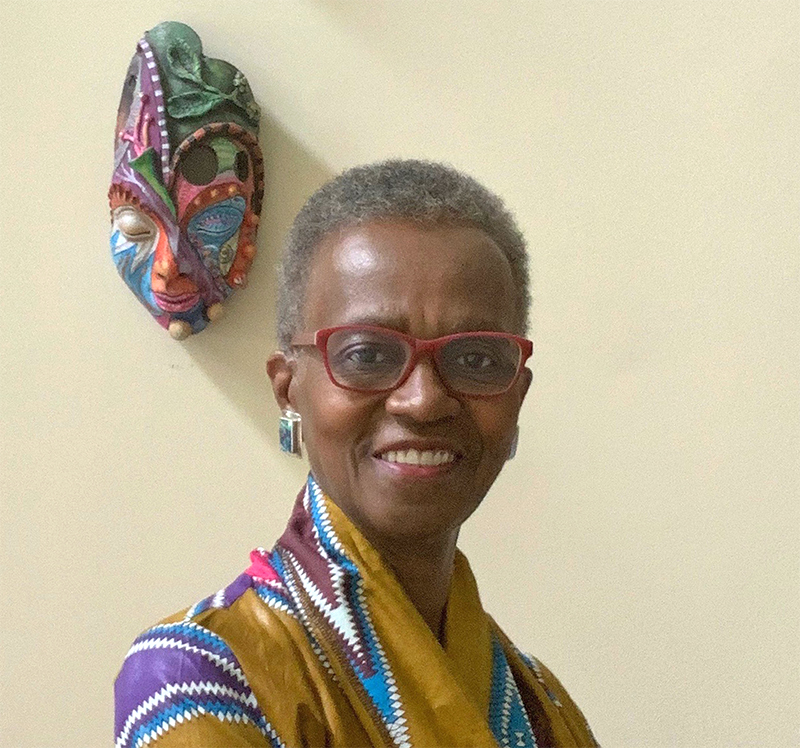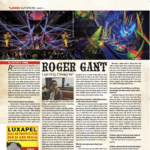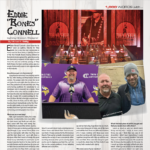
Kathy A. Perkins is a lighting designer, professor emerita, and now a 2022 USITT Fellow. Perkins recently made her Broadway debut as lighting designer on Alice Childress’ Trouble in Mind at the Roundabout Theatre Company. Perkins is also a frequently published scholar, researcher, and author. She is the administrator for the Black Stage Designers private Facebook group, part of her efforts to realize equity, diversity, and inclusion within the design and technical theater field. As an educator she was the Chair of the Lighting Design Program at the University of Illinois-Urbana Champaign for 20 years and was Professor of Design in addition to teaching courses on Africa/African Diaspora theater and non-western theater at the University of North Carolina at Chapel Hill. She has earned numerous awards for her lighting designs including the NAACP Image Award. Perkins is a 35-year member of the United Scenic Artists, Local 829.
What drew you to lighting design?
When I was an undergrad at Howard University for acting, in 1972, I was backstage with a good friend who was a sophomore in lighting, ironically, we were working on an Alice Childress play at the time. He said, ‘What are you going to do with a BFA in acting?’ And I replied, ‘What do you think? I’m going to Broadway.’ He laughed and said, ‘There are no roles for Black women on Broadway. I’ve seen you hanging and focus lights. I think you’d be good in lighting. Why don’t you try lighting? If you go into tech, you’ll never have to wait tables. You’ll always work.’ There was a touring house next door and he said, ‘We are always looking for people and you can make a lot of money.’ After I got over my bruised ego about my acting, I took him up on it. At first, I was doing it because the money was so good but then I just fell in love with lighting. My sophomore year I switched my major to lighting. I started doing productions in the department and continued to work in a touring house. I worked professionally the whole time I was in DC and at the time, we’re talking about the ‘70s, I lit people like Patti LaBelle, Earth, Wind & Fire, and Chaka Khan.
One job that stands out was the summer before I went to grad school, I did the Folklife Festival, through the Smithsonian, that included traveling with the show, which was something I had never done before. James Lucas recommended me for the job, he’s still a mentor of mine. He was, in fact, the first Black stagehand to work in the Kennedy Center. When the IA integrated, I don’t know if you know that the IA was segregated back then, DC was the very last local to integrate in this country [not until 1981]. The summer of ‘76, James was getting ready to go on the road with Roberta Flack for about six months instead of doing the Folklife Festival as he usually did, and he said to me ‘I think you can do this.’ It meant a lot that he had faith in me. My job was to be production manager and lighting person for a group from Jamaica. We performed in DC on the Mall and then we toured the country to about 13 different cities. I had to coordinate the pickup and drop-offs from the airlines/venues, be in charge of luggage/baggage in addition to designing the lighting. This was before Internet, fax machines, and ATM machines, so it was quite a challenge. But it made me realize how I could work quickly and efficiently. That was something I learned about myself. I realized that if I can do this, I can do anything.
Who was a role model for you in lighting design?
I would say Shirley Prendergast. She was the first Black woman to light on Broadway. When I was at Howard University a lot of people would visit from New York and say, ‘oh, you need to meet Shirley when you go to New York’. And then I met her, and she took me under her wing because no white designers would take me on. They would not hire me. They were very clear about it. Just to give you an example, when I was at the University of Michigan for grad school, they brought in a Broadway lighting designer who I was assigned to assist. Mainly because I knew how to run the computer console better than anybody. This guy said he was blown away by my work ethic, how quickly I worked, and how creative I was working with him. But when he left, he never said, ‘Here’s my card. Look me up if you come to New York.’ After I graduated, I was in New York, and at the time this designer had four shows opening that season, so I called him. That was when you could look through the phone book and just find somebody’s number. I called him and said, ‘My name is Kathy Perkins. I don’t know if you remember me.’ He said, ‘Of course I remember you. You’re like the best assistant I ever had.’ I told him I was in New York and asked would he bring me on as an assistant? And there was this silence on the phone. Like a ‘hello, are you still there?’ kind of silence. Then he says, ‘You have to understand. This is not the right time.’ I asked what he meant? He told me, ‘As an assistant lighting designer, you would be in the theater with me all day long, 12, 14 hours. And no one is going to believe that you have an MFA in lighting or that you even know what you’re doing. They are not going to believe an older white man sitting there with this young attractive Black woman. They are going to think you are somebody I picked up. For that reason, I just can’t hire you.’ I was like, oh, and then another white designer said basically the same thing. I was also told no by a white woman who said, ‘I have a partner and I don’t think my partner would be happy with me with a young Black woman assistant. That’s going to cause problems.’ I was very naïve; I didn’t know what she meant at the time. Then I asked Shirley, ‘Can I work with you?’ And she said yes. Shirley was always the role model for me.
She was wonderful. Whenever I said, ‘I’m doing this show in the city. Can you come and look at what I’m doing?’ She would drop whatever she was doing to come by and give notes. Always saying, ‘why are you doing this? Why don’t you try this?’ She was really good. I’m just sorry that she didn’t live to see Trouble in Mind because that was always one of her dreams for me. Always telling me, ‘You’re going to be the next Black woman on Broadway.’ And I was, but she sadly didn’t get to see it.
You know, I’ve probably designed at more regional theaters, and now Broadway, than any Black woman in the country. I don’t say that as a badge of pride or something, I think it’s quite sad, because here we are in 2022, and I’m the second Black woman on Broadway in lighting. What does that say about the American theatre that there’ve been so few of us? The 2021-22 season, thanks to George Floyd… and I always tell people, this would not be happening now had it not been for George Floyd, everybody needs to remember that. I’m hoping it’s not a moment, but that it is a movement that will continue. I know a lot of the Broadway producers and theaters have written this agreement that they will not have all-white production teams on any of their shows. I just hope they will stick to that.
What is a piece of advice that you got early in your career that you still find applicable today?
It’s all about how you treat people; it’s about how you deal with people. I’ve always told my students that. I don’t care how great of a designer you are, if you can’t get along with the director or the rest of the people you’re not going to work. I’ve seen this happen so many times. Be nice to everybody. I don’t care if it’s the doorman or whoever because you just don’t know what people can do for you. Also, be on time. Of course, being on time doesn’t mean showing up at 8:00 for an 8:00 call. For an 8:00 call you show up at 7:45 or 7:30 to be ready to go at 8:00. Be on time and treat people right, those are the two big things for me.

Is there a production you fondly recall as a designer?
Trouble in Mind. Alice Childress was a mentor of mine. I published a collection of her plays. A couple of months before she died, she said she realized she would never get to Broadway. Throughout my theatre life I knew about Alice Childress and Trouble in Mind not getting to Broadway or her play Wedding Band. And then listening to her in ‘94 saying ‘my shows will never get to Broadway’. So now today, with that history, for me to be the designer of her show 66 years later, doing this production—on Broadway—was more than an honor. This was something I thought would never happen. It is amazing the mere fact that this happened, now during this time, and with Charles Randolph-Wright, the director, who always had this dream as well. I’ve known him since 2007 and all he talked about was ‘I’ve got to get Alice on Broadway. I’ve got to get Alice on Broadway.’ Well, he did it and we were all amazed and honored to be part of fulfilling his dream; Alice’s dream; all of ours. This show was very personal to me because of Alice; and because I’m making my Broadway debut; but mainly I am happy for Alice more than for myself. It was just a wonderful experience. We all knew that Alice was in the room with us throughout the entire process.
Michael S. Eddy is Co-Editor of PLSN Magazine


